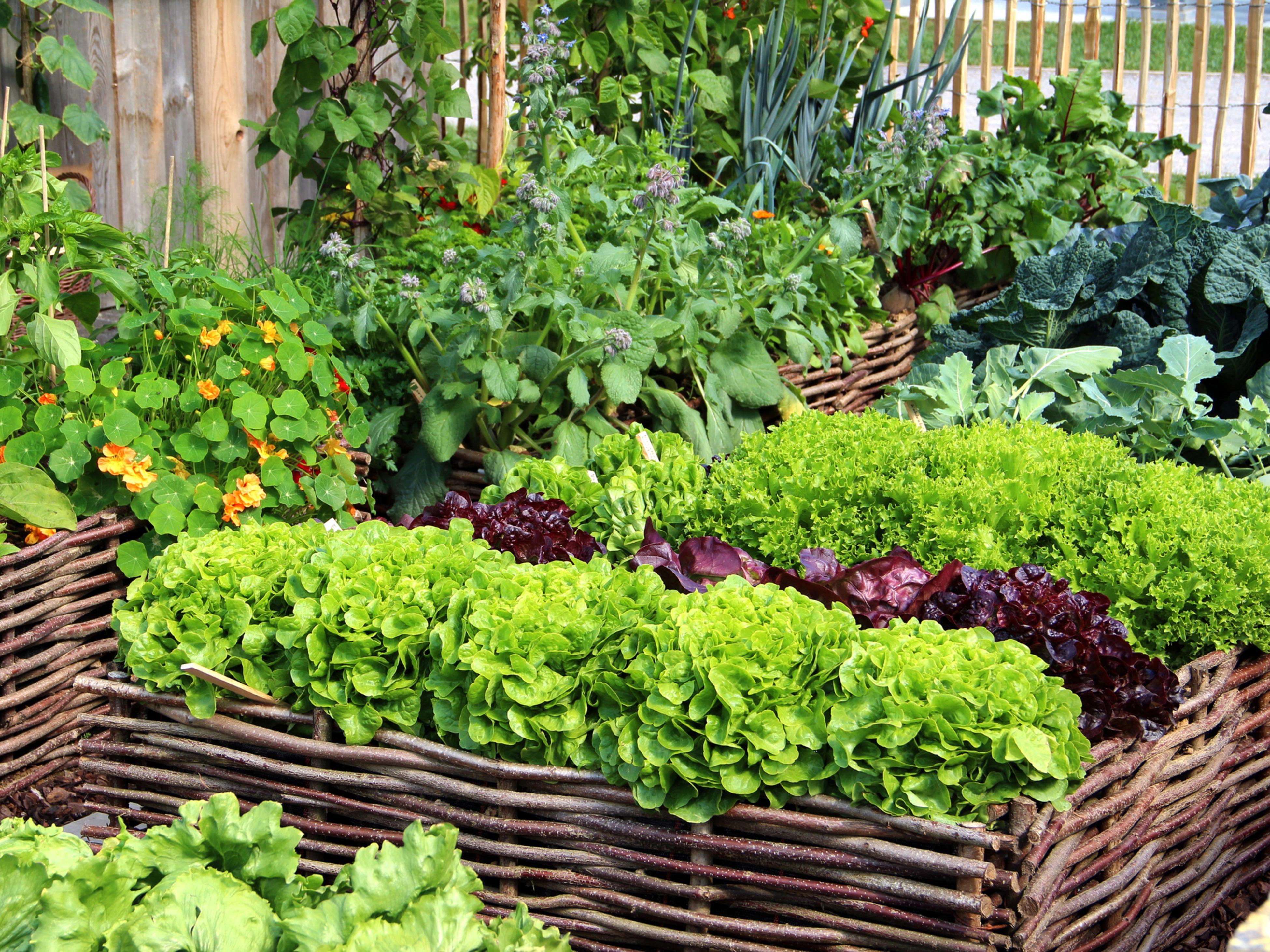Raised Garden Beds - What Type Of Wood Should Be Used To Build?
Pressure-treated or non-pressure-treated wood for your raised beds
Need help with your yard? Get your free quote today!
Get a Free Quote!
When building raised garden beds, one of the primary considerations is balancing longevity against potential chemical exposure. Below are some points to help you decide whether to use pressure-treated or non-pressure-treated wood for your raised beds.
1. Pressure-Treated Wood
Pros:
• Longevity: Pressure-treated wood is infused with preservatives that make it highly resistant to rot, moisture, and insects. If you’re aiming for beds that will last 10–15 years (or longer), pressure-treated lumber can be a good investment.
• Availability & Cost: Widely available and often more affordable than naturally rot-resistant species (e.g., cedar or redwood).
Cons:
• Chemical Concerns: While modern pressure-treated wood (often treated with alkaline copper quaternary, or ACQ) is less toxic than the older chromated copper arsenate (CCA), some gardeners still worry about the potential for chemical leaching, especially when growing edible crops.
• Handling Precautions: When cutting or drilling pressure-treated wood, you should wear a mask and gloves because of the dust and preservative chemicals.
Tips If You Choose Pressure-Treated:
• Line the Inside: Some gardeners staple landscaping fabric or plastic to the interior sides of the bed to act as a barrier.
• Use ACQ (or Newer Formulas): Avoid older CCA-treated lumber. Always confirm with the supplier what type of preservative is used.
2. Non-Pressure-Treated Wood
Pros:
• Minimal Chemical Exposure: Untreated lumber does not contain added preservatives, making it generally safer for growing edibles.
• Eco-Friendly Options: If you choose naturally rot-resistant species like cedar or redwood, you get a good balance of durability and safety without manmade chemicals.
Cons:
• Reduced Lifespan (Unless Rot-Resistant): Standard softwoods like pine or spruce will deteriorate faster—sometimes lasting only 5–8 years, depending on moisture levels.
• Higher Cost for Some Species: Cedar or redwood can be more expensive upfront than pressure-treated pine.
Tips If You Choose Non-Pressure-Treated:
• Consider Rot-Resistant Species: Cedar and redwood are popular because they contain natural oils that slow decay.
• Maintenance: Applying a food-safe sealant or natural oil (like linseed oil) can help extend the wood’s lifespan.
• Plan for Replacement: Understand that non-pressure-treated boards may need replacing more frequently than pressure-treated boards.
3. Alternative Materials
If chemical concerns or frequent replacements are a worry, you might also consider:
• Composite Lumber: Typically made from recycled plastic and wood fibers; resists rot and insect damage, though it can be pricier.
• Concrete or Stone Blocks: Extremely durable, but heavier and often more labor-intensive to install.
• Recycled Plastic Boards: Weatherproof and long-lasting, but can be more expensive than wood.
4. Making the Decision
Ultimately, the choice depends on your priorities:
• If Longevity and Budget Are Key: Pressure-treated wood can be a good fit, especially if you use newer formulas (ACQ or similar) and line the interior to minimize contact with the soil.
• If Growing Organic or Minimizing Any Chemical Risk: Naturally rot-resistant species like cedar or redwood (or composite materials) may be worth the higher upfront cost and slightly reduced lifespan compared to pressure-treated.
Wavy metal (corrugated metal) raised beds have grown in popularity thanks to their unique look, durability, and relative ease of assembly. Here are some points to consider if you’re thinking about installing wavy metal beds
Pros
- Durability and Longevity
• Metal is naturally resistant to rot, insects, and fungal growth.
• Corrugated metal panels are often coated or galvanized, helping them withstand moisture and resist rust for many years.
- Distinctive Aesthetics
• The wavy, galvanized look can add a modern or rustic twist to your garden design.
• They pair well with both traditional and contemporary garden styles.
- Lightweight and Easy to Assemble
• Corrugated metal panels are relatively light compared to lumber of similar size.
• Many kits come pre-drilled and ready to bolt together, making assembly quick (especially compared to building wooden beds from scratch).
- Minimal Maintenance
• Unlike wood, you generally don’t need to seal or stain metal.
• Wiping them down occasionally to remove dirt or leaf debris is often sufficient.
- Potential Portability
• Smaller metal beds can sometimes be relocated if needed (though moving them when filled with soil is still a challenge).
Cons
- Heat Conduction
• Metal can conduct and retain heat, especially in direct sun.
• In hotter climates, soil near the edges may warm up quickly and dry out faster. Gardeners may need to water more frequently.
• In cooler climates, the warmed soil can sometimes be beneficial for extending the growing season.
- Upfront Cost
• Corrugated metal panels can be more expensive initially than basic untreated lumber. However, considering their long lifespan, the cost might balance out over time.
- Sharp Edges
• Some metal beds have edges that can be sharp. Look for beds (or kits) that come with protective edging or rolled rims to reduce the risk of cuts.
- Risk of Rust (Depending on the Material)
• Although galvanized or coated metal is generally rust-resistant, over many years (and in very humid or rainy conditions) some wear or rust spots may appear.
• Properly coated or high-quality galvanized steel usually minimizes this issue.
Tips for Using Wavy Metal Raised Beds
- Insulation Lining
• In hotter regions, you can line the interior walls of the bed (either with cardboard, bubble wrap, or another insulating material) to help reduce the soil temperature fluctuations.
- Protect the Bottom
• If your bed is placed on soil rather than a hard surface, consider laying hardware cloth or weed fabric at the bottom to deter weeds and pests (e.g., gophers).
- Soil Depth and Filling
• Metal beds come in various depths. Choose a depth suited to the types of plants you’ll be growing. Taller beds may require less bending down to tend plants, but you’ll also need more fill material.
• You can save on fill by placing organic yard debris (sticks, leaves, or straw) in the lower part of the bed, then topping with compost and garden soil.
- Pay Attention to Orientation
• If you’re worried about heat, orient your bed so that the narrow sides face east-west. This reduces the time any single side is in direct sunlight, potentially keeping soil temperatures more moderate.
Final Verdict
Wavy metal raised beds are a stylish and durable option for gardeners seeking a low-maintenance solution. They stand up well to the elements and can last significantly longer than some wood options. Be mindful of potential heat buildup in warm climates and the initial investment. Otherwise, if you like the modern-rustic aesthetic and want a bed that resists rot and pests, wavy metal beds can be a fantastic choice for your garden. Did
In summary, pressure-treated wood offers enhanced durability but comes with potential chemical concerns, especially when growing vegetables. Non-pressure-treated (or naturally rot-resistant) woods are often preferred by organic gardeners looking to minimize chemical exposure, though they may need replacement sooner. By weighing your budget, maintenance expectations, and comfort level with potential chemical exposure, you can determine the best material for your raised beds.
